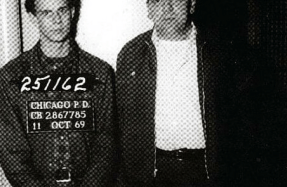
In March 2020, within weeks of the first diagnosed cases of COVID-19 in New York, Philip Montgomery began documenting the health-care workers and staff in nine of the city’s hospitals. On his first day, 1,162 new patients had been hospitalized with the disease, and 349 had died. By April 6, his last day, 19,177 people had been hospitalized with the virus in New York, and 3,202 had died. As the story shifted to how New Yorkers would mourn an unimaginable loss, Montgomery chronicled a funeral home in the Bronx, where two undertakers strove to provide services with dignity in a time of isolation. Montgomery hoped his images would “galvanize” the country—and testify to the scale of the tragedy.
One of the most accomplished photojournalists of his generation, Montgomery has covered major U.S. stories from the aftermath of Michael Brown’s killing in Ferguson, Missouri, in 2014, to the flooding after Hurricane Harvey in Houston, in 2017. Faces of an Epidemic, his account of the devastating effects of the opioid-addiction crisis in Ohio, earned a 2018 National Magazine Award. Last fall, Montgomery spoke with Kathy Ryan about covering New York as the city became the global epicenter of the coronavirus pandemic, publishing powerful photographic essays in The New Yorker and The New York Times Magazine, where Ryan is the director of photography. As Montgomery recalls, “It was like a movie being played out in front of me in real life.”

Kathy Ryan: What was it like to be in the epicenter of the pandemic, photographing in New York’s hospitals during this crisis? How do you prepare for something like that?
Philip Montgomery: I’m not sure there was a way to really prepare. I wasn’t necessarily in panic mode, but it was a feeling of all-hands-on-deck in thinking about how we were going to cover this in the city. You and I had discussed it: “Well, let’s do ride-alongs with paramedics.” “Let’s look at the USNS .” But I think we both knew that this story was best told inside the hospitals. That was priority number one.






